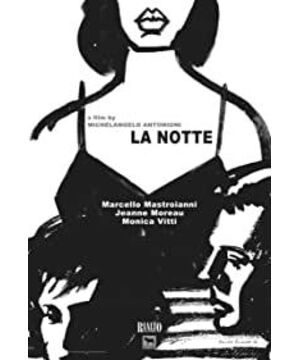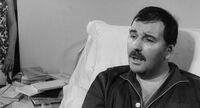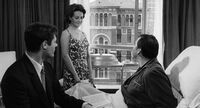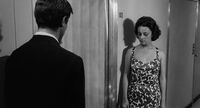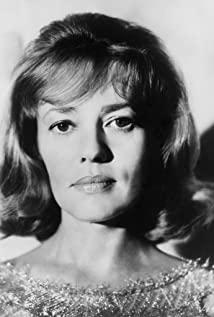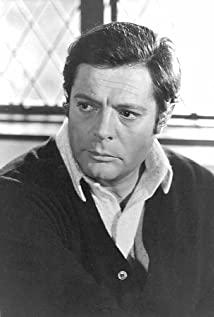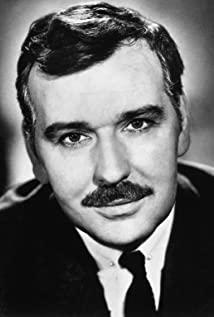The buildings in the film "Night" are very special in many ways. When the movie started shooting, we had already seen a complex of buildings. We photographed it from the aerial rooftop, which is the only aerial rooftop in Milan. It was built in 1958 and designed by a famous architect. We took a panoramic view of the city from the top and got an incredible view. We overlooked from the top of the building and took the view from the window, so the window became the most important part of the architecture, the movie, and the scene. The framing from the top of the building all the way down, makes the movie appear more real, and makes the complex of buildings a kind of illusion. What's more interesting is that we can see the reflection of the building from the window. Through reflection, mapping and lighting, all this becomes dynamic. Through the windows, you can see more possibilities in these buildings. In fact, the tone of the movie is based on the dim light. When the picture turns to the ground, everything comes alive, and the soul in our reflection comes alive. So we are very alert to the sense of reality, only the buildings remain unmoved.
"Night" is actually a movie about modern life, after all, a single building cannot build a movie. Too much noise makes people feel suffocated when walking in it. What's interesting is the reaction of the character Lydia in the movie to her sick friend: she is struggling inside. We started from this scene to pave the plot, and through the protagonist of the movie wandering among the urban buildings, the plot is unfolded by this kind of wandering. The camera followed Lydia's every move without any narration. Following such a scene makes people think about what modern life is like and how people live in such an unfree environment. She didn’t really tell us "My friend is dead, how frustrated I am", but she expresses this through the way she walks in the city and constantly searching for what she wants to find out. Maybe she is looking for a life for herself. Meaning. All of these are reflected by the turbulent crowds, traffic and buildings, so the reflection from everything in the movie is so important. In this way, the building becomes more special.
In the movie, the building is no longer just an object. Through it, we can understand the inner activities and emotions of the characters in the film. By seeing Lydia walking next to a high wall, she is confused and hesitated in the frame of the film, lost and at a loss in it, we can read what she is thinking. There are windows and reflections everywhere, everything presented in the movie is so vague, everything becomes a medium for the external environment mapping, not just a monotonous building. The character walks in it, showing her relationship with the city and her thoughts about the city.
Architecture has become a really important element in the movie, turning a substantial scenery into an illusory scenery, and the illusory scenery depends on the reflection on the building, the reflection on the glass wall. Antonioni used a very interesting architectural technique to construct space. That is a technique in film and television, which is called "isolation of time and space" in English. It means that the time at that moment is actually meaningless, it means to live in space, it means to start framing before the character enters the scene, or that the scene still exists after the character leaves the scene. In that scene where the characters and the space overlap, we feel that we are not real, but in fact we are part of the city: we witness, we participate, we belong here, belong to the architecture, but our heart does not belong to Lidi This city where Ya lives. In this way, a strange atmosphere is also created: the characters are not the characters in the movies, but the characters in the city; they are reflected in the city. To some extent, we are beginning to realize what Milan will be like in 1961. Then at that moment, somewhere in the city, she met an old woman who was like an object in the city, like a silent film. Recording everything in the city in this way is a kind of realism of the city. At a specific place, at a specific time, and a specific environment, this is a strange way of communication between us and the architecture. Architecture is also the environment. It is emotional and sensitive. It responds to everything that happens at every moment in the city. And at such a specific time, the characters struggled, bored in the torture of thinking about the meaning of existence, and couldn't figure it out. They look like a lifeless object, and their real sentient side is no longer attached to them. And in such a scene, they have no desire for communication and contact with others. You can see this from the way Lydia walks in the city: she didn't stop or slow down the people she met, or even looked up at them. Some shots of her walking under the building were taken in the air through an airplane.
The most interesting part of this passage is that she leaves the modern building and enters a deserted and old building, perhaps a building that was destroyed in the war but still remains. She walked into the yard and found some old antique objects, such as a clock lying in the middle of the ruined ruins; she picked up a child who was crying alone in the yard, and her comfort did not help at all; she stood up Looking around the walls, I touched the surface of some old broken walls. What's interesting is that the way she touched the wall conveyed a message of changes in the world; to find herself where she touched, expressing the character's desire to go back to the past.
It is wrong to say that buildings are completely emotional. Different buildings can affect different behaviors. They become explorers, and I think the most important thing is to explore in modern architecture. In this modern world, many human behaviors have changed, and a new behavior must be discovered. So look at the glass windows in this city, the buildings in reality, and then realize that buildings, in fact, are buildings that carry the social phenomena of this world. Their behavior revolves around these buildings; in such a situation, they follow the crowd and follow social changes. For me, it is very interesting to have a woman play such a role. She is the eyes that move in the city. And at the same time she is a walker. This was extraordinary in 1961: a woman entered and exited public places alone, yet so comfortable and respectable; a man stood in front of her like that, but she did not flinch. So to some extent, this is a positive side.
We can see from what is reflected in the building that a modern woman appears in such a movie. In fact, she is regarded as an object: she is an object capable of surviving, able to survive in space And public society. She even went to Belifilia. In such a scene we can see the state of those who are on the margins of society. In some of the marginal and impoverished areas of Milan, it is a bit incompatible with this city, or the newly-built city. Even in such a special situation, she was still aware of herself and was able to isolate herself from them. This shows us an incredible social divide. What is interesting and unique is her lonely footsteps. In his home, it was an interesting turning point. He returned home and waited for her while she was still walking through the city, still thinking about what happened to her, what happened to her life, and what happened to her friend. She is far away from home. We continue this style of letting her stand in an independent space. In fact, there is also such a plot: He finds her traces in the space she has been to. At different times, in different places, and with different people, we realize that there is nothing but empty space in an empty space. Her footsteps continued, becoming a straightforward narrative, but with a completely different emotion.
I think Antonioni’s application of modern architecture, those thick gray walls, those huge white walls, and those glass windows, they look hollow. But in fact there is the reflection of this lady in such a cavity. It's a bit complicated to some extent. This is a very interesting scene in the film. Sometimes I think the interpretation of this movie is like acting myself. Once I visited the studio in New York and looked around the studio. It was very modern, smooth, colorful, and equipped with advanced equipment. Those colors looked just like Like a movie, there is no disguise. So just when we look at such buildings to make comparisons, as well as the scenes in the movies, women's emotions play a role in blurring. It seems that despite their glamorous appearance, you know, in many ways, these people will go to nightclubs or go to parties to fill themselves in order to hide their inner emptiness. But self-deception, to a certain extent, just like Lydia walking alone in the city, this whimsical set off their behavior. This shows that some things have changed in real society. And the behavior of those people formed a sharp contrast with her. Some of her cannot integrate into this environment and cannot communicate with those people, but these people find that they can begin to understand different things or objects, so you find that different people have different lives. This is not about reality, but about understanding. This complex city, personnel, and modern life.
There are many scenes, all with those very distinctive buildings as the background. Those modern buildings are also part of the movie, especially the Capitol Building and the Pirelli Corporation Building, which appear frequently. Compared with modern buildings, we began to realize its geographical and cultural value at that time.
I think that Antonioni's outstanding brilliance lies in the reflection of the building through the glass. When we arrived in Milan, we were full of expectations for that city, with glass buildings everywhere. Antonioni's way of using glass construction is very interesting, hoping to reflect everything that happens underneath through the surface. We often think that glass buildings are fragile, and the change of one place means the change of the whole building. And you can see two worlds, you can see everything. But Antonioni thought more complicated, and he made it very interesting: through such modern architecture to make the movie even better. You may have never seen such a glass building before. At that time, it was completely regarded as an obstacle. The relationship between what is visible and what is refracted is also the theme of the movie. I can't see the windows anymore, and the windows have changed, as I knew it from the beginning of the movie. By John. What Ponta had built was shot in the movie intact. These distinctive glass windows make things more complicated. Watching movies, you sometimes feel that these glass buildings have also brought changes to Italian society: it has changed people's views on public life and private space, and also changed the boundaries between public life and private space. Private space becomes public, and this is what the film wants to express: expose the invisible. Can I photograph the lives of a couple without being noticed? Everything is so novel, looking at private space with a new perspective, of course, is not doubting the public environment. Another point is that these buildings, when you want to do some very personal things, you also have to expose them. Therefore, there is nothing to say about protecting personal privacy. In the public environment, all your actions have been exposed, so to some extent it can be said that infringement has happened unknowingly. This is also a point that characters, especially female characters, are very taboo. Through this arrangement and shooting method, everything is exposed and it is also very effective. So he didn't just want to express the architecture, in fact he was conveying ideas. The surface of a modern building is like living life. Every time you shoot inside a glass house, the wall always reflects the scene at that time. To a certain extent, it is like a camera. So the visual space feels like it has become wider. Sometimes they are just an obstacle, sometimes they reflect something. You will find it difficult to touch and communicate, because the participation of the character becomes more difficult. And this kind of participation is visible, so these feelings are different. This kind of participation is very different. This kind of visible participation can appear on the screen. After all, what appears on the screen is architecture, and the appearance of architecture also comes from the idea of participation. Therefore, at the beginning of the movie, we realized that architecture is also a main theme of the movie. Also let us know that architecture is also alive. At the end of the movie, we really understand the movie architecture, we know that the movie architecture is very similar to modern architecture.
Here you will find that windows are walls and doors, so to a certain extent the architecture of the movie also allows us to see different styles that make us feel more novel.
At the end of the movie, there is a dialogue that we can't hear. What was the character thinking at the time? But we know now, because we can feel that this part of the design touches something deep in our hearts. So despite the different translations, what they said and what happened in their conversations depends entirely on your own thoughts. Not only for the characters, but also for the majority of society, what is more interesting is their dialogue at the end. They know to get out of that place, out of that building. They arrive in an open space, which also enhances the possibility of dialogue between the characters. It's not that the reference objects are different in different environments, but because this is an unavoidable place, this is actually another great building. Compared with the buildings that can be refracted, it refracts what we already know. This is another form of screen, which is an exterior scene that is different from the interior scene. What's very interesting about the last scene is that the scenery is actually fake. Without natural scenery, it is actually a landscape painting. Shooting in this way under such an atmosphere feels as if modern architecture does not exist. This is actually the same as in other places. It is actually the same as the surface of the glass building we are looking at. It is a way to tell the big content. Scenery is actually something that we don't think about at first. We feel that it already exists and we don't need to think about it. So some people will feel very confused and don't know what we are doing there. The more I think about it, the more I will learn, Antonioni takes the landscape as important as the architecture. Whether it is the scenery in the private space or the public environment, all of this can be given life, so at that time, landscape painting was also popular for a while.
Left a suspense at the end of the movie. This method of shooting allows people to decide for themselves who is the loser. You can also imagine what will happen to them next, and imagine where the characters belong. So we started to move the lens and start to take pictures of the surrounding environment. This kind of movement made people's imagination space bigger. This method allows you to understand the charm of buildings and their status. All of this is achieved through combination, contrast, and spatial movement. It also includes time changes. You will also understand how much of the success of the film belongs to the architecture. Because it is not a simple building, it is a very special building. This allows you to understand that your appearance is not important, what matters is the way you exist in the world. Antonioni is very good at this. This will make you realize that the two can be combined in this way. All this is because of the way he shoots. He is not only shooting movies, he is turning them into modern buildings. In my opinion, Antonioni is the person who knows this best. He combined architecture and film shooting in his films.
View more about La Notte reviews


